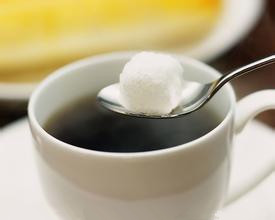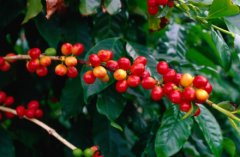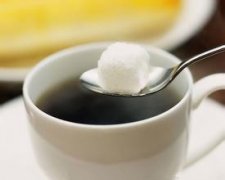China will become the largest coffee consumer in the world

Experts estimate that China will become the largest coffee consumer in the world. By 2020, if China drinks one cup of coffee per person per day, the coffee bean market alone will reach 50 billion US dollars a year, and the entire industry will generate a market of hundreds of billions of US dollars. The popularization of coffee has become a must. A survey was conducted on 2465 ordinary citizens who had had coffee in Beijing, Shanghai, Guangzhou, Chengdu, Chongqing, Guangzhou, Hangzhou and Nanjing in the past three months. The matching sampling method was used in the survey, and the names were assigned according to the number of years and the proportion of sex.
Mainstream products: instant coffee
Statistics: among the recipients, most of them drank instant coffee, the proportion was as high as 92.2%, and more than half of them (58.4%) drank three-in-one bags of coffee. 16.8% drank roasted coffee and 9.4% drank other coffee ingredients. When the consumption rate of a certain type of coffee was rejected, 6% of those who drank instant coffee every day and 38.4% of those who drank it frequently. In the category of "occasional" coffee, the consumption rate of three-in-one bags and instant coffee is very close. Those who said they drank three-in-one regularly accounted for only 13.1%.
Analysis: the percentage of people who drink instant coffee and three-in-one bags of coffee is the highest, and the percentage of people who drink instant coffee and three-in-one bags of coffee is also the highest. It is said that instant coffee and three-in-one coffee have great development in the field of primary consumers.
The main population-- young and middle-aged
Data: the degree of preference for coffee varies from year to year, among which people who say they like coffee very much account for 24%, 24%, 20%, 30% and 18%. Further examination shows that the proportion of men who drink coffee is higher than that of women. Of all the respondents, 55.1% of men and 44.9% of women drank coffee. Analysis: coffee as a special taste is deeply loved by young consumers, and middle-aged and young people are the main consumer groups of coffee products. The promotion of coffee products should be rich in culture. "Coffee is an imported product. For the Chinese, the number of people who use it every day is still relatively small, and for most consumers, it is not a necessity of life. New consumers (such as old age, students) are very interested in it, but they prefer to keep people stable, which means they are less likely to form a lasting ability. Coffee consumers are mainly middle-aged men, but their brand loyalty is high, and their choice of new brands is small. In fact, for most consumers in China, the use of coffee is not used as an ingredient, but to a greater extent as a symbol of taste. Therefore, consumers of the domestic coffee market should patiently educate and spread the coffee culture and promote the historical culture of coffee in order to expand the domestic market.
On the surface, the market for coffee products seems to be stable, with very few major activities, but in fact, this market has not only the popularity of coffee brands in the industry, but also the popularity of related products such as tea ingredients and juice ingredients. According to the survey, the average minimum cost of three-in-one coffee is 1 yuan, that of instant coffee is at least 2 yuan to 3 yuan, and that of fried coffee is as low as 10 yuan. In a high-end coffee shop, a cup of coffee costs at least 20 yuan. On the other hand, fruit juices and carbonated ingredients are much cheaper than coffee. Therefore, for a corresponding part of the consumer population, fruit juices and tea ingredients have become their first priority.
Before the market is mature, we must first enrich the product line and then lead consumers to buy coffee products, so to improve the marketing power of coffee is also an important factor in the test.
With China's rapid economic development after joining the WTO, people's living standards are constantly improving. Coffee, a Western-style product, is being accepted by more and more countries, and the resulting coffee culture is filling every moment of life. Coffee is no longer just an ingredient, it is fashionable and tasty together, showing a high-quality modern life.
(1) from the perspective of the overall domestic market
Statistics show that there are 5 million people in Finland, and the annual consumption of coffee is 100 packets. China, which has a population of 1.3 billion, now consumes 200,000-40 million packets of coffee a year. From this comparison, we can see that the prospect of China's coffee consumption market is very promising. At the same time, the number of coffee consumers in China is between 200 million and 250 million, which is on a par with that of the United States, the largest coffee consumer in the world.
(2) in terms of the growth rate, the coffee consumption rate of Chinese people is still small, but the growth rate is very impressive. The annual growth rate of coffee consumption in China is 15%, while that of coffee consumption in the world is about 2%. The same data show that China's per capita coffee consumption has been increasing at a rate of 30% year by year since 1998, and China is expected to become the most powerful coffee consumer in the world in the past few years.
(3) in terms of per capita consumption, according to relevant statistics, the average annual consumption of coffee per person in developed countries in Asia and the United States is more than 500 cups, and some even exceed 1000 cups, such as Finland and Sweden. The Japanese in recent years consume an average of 200 cups a year, while the Japanese consume an average of 140 cups a year. At present, the average amount of coffee consumed by each Chinese is only 4 cups per year, and even in big cities like Beijing, Shanghai and Suzhou, the average annual consumption per person is only 20 cups. By contrast, after entering the 21st century, China's coffee consumption market will have a huge space to develop and rise.
Important Notice :
前街咖啡 FrontStreet Coffee has moved to new addredd:
FrontStreet Coffee Address: 315,Donghua East Road,GuangZhou
Tel:020 38364473
- Prev

The picking of coffee beans coffee beans are the seeds of coffee trees.
Coffee beans are the seeds of coffee trees. After 3-4 years of growth, the coffee tree matures and begins to bear fruit in clusters or clusters along the branches. The outside of the seed is a layer of peel, which can be picked as soon as it turns red. Under the red skin (exocarp) there is a layer of pulp (mesocarp), which is a small thin layer, and then a layer of material endocarp like parchment. In all
- Next

Analysis of the nutritional composition of Coffee
● caffeine: caffeine is the most eye-catching caffeine for all adults. It is a kind of phytoflavin (animal muscle ingredient). Its properties are the same as theobromine in cocoa, green tea contains the same theophylline, and the percentage of reduction after baking is very small. Caffeine has a wide range of effects. It can accelerate the metabolism of the human body and keep people clear-headed and sensitive. The mention of coffee
Related
- Detailed explanation of Jadeite planting Land in Panamanian Jadeite Manor introduction to the grading system of Jadeite competitive bidding, Red bid, Green bid and Rose Summer
- Story of Coffee planting in Brenka region of Costa Rica Stonehenge Manor anaerobic heavy honey treatment of flavor mouth
- What's on the barrel of Blue Mountain Coffee beans?
- Can American coffee also pull flowers? How to use hot American style to pull out a good-looking pattern?
- Can you make a cold extract with coffee beans? What is the right proportion for cold-extracted coffee formula?
- Indonesian PWN Gold Mandrine Coffee Origin Features Flavor How to Chong? Mandolin coffee is American.
- A brief introduction to the flavor characteristics of Brazilian yellow bourbon coffee beans
- What is the effect of different water quality on the flavor of cold-extracted coffee? What kind of water is best for brewing coffee?
- Why do you think of Rose Summer whenever you mention Panamanian coffee?
- Introduction to the characteristics of authentic blue mountain coffee bean producing areas? What is the CIB Coffee Authority in Jamaica?

